Hamstring strains and tears are one of the most common injuries on the sporting field. It often presents as back of the thigh pain, with associated weakness, swelling, and occasionally bruising.

Why Does it Happen?
Hamstring strains occur when the muscle does not have the capacity to meet the demand/load of the sport.
Hamstrings attach from above the back of the hip all the way down below the knee, and as a result, are a biarticular muscle, meaning that it passes and actions through two joints (the hip and the knee).
This means that the hamstrings are particularly susceptible to injury as there are more opportunities to load and lengthen the muscle, especially as it controls the leg before it lands on the ground again.
Am I More Likely to Injure My Hamstring
Hamstrings are often injured during sprinting, particular as the athlete is fatigued towards the end of the game or race. Some contributing factors include:
- Previous history of hamstring injuries
- Poor hamstring flexibility and strength
- Hip weakness
- Reduced core stability/strength
- Reaching when running
- Poor conditioning and therefore unable to maintain optimal biomechanics
So, What Should I Do if I Get Injured?
Like most muscular strains, the initial management over the first few days should involve Peace and Love.
The initial idea of this is to help protect the injured tissue and to facilitate tissue recovery and to provide an optimal load to help rebuild the damaged tissue.
Initial load can include basic exercises like walking, biking, and hip stretching, before building up to the exercises below.
What are a Few Exercises I Can Do To Help?
The key with loading your hamstrings after an injury is to listen to your body and not to push into pain you can not tolerate.
After consulting with a physiotherapist, you may be prescribed a few of the following exercise, so feel free to give these ones a go to feel the difference!

Active Hamstring Stretch
Holding your leg to 90 degrees, try to straighten your leg as far as you can.
2-3 sets of 6 repetitions, holding at the top for 2 seconds
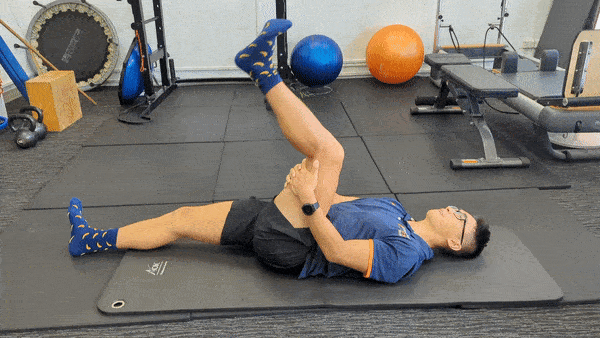

Isometric Heel Digs
Holding your leg out at 100 degrees (in this photo my left leg), digging into the ground with your heel.
Hold for 45 seconds for 5 repetitions, with a minimum 2 minutes rest between reps.
Isometric Hamstring Walks
Get into a glute bridge position, take 2-3 steps on each leg as you slowly lower them onto the ground.
Perform around 3-4 sets of 6-12 repetitions as tolerated.
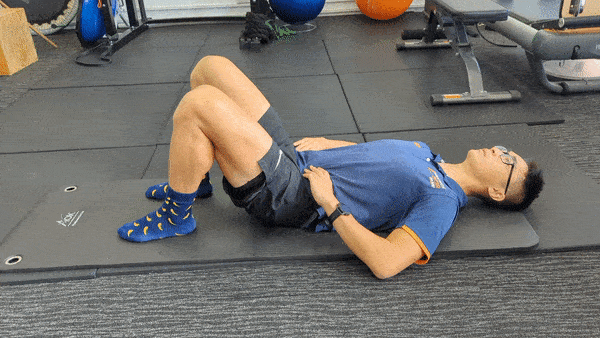
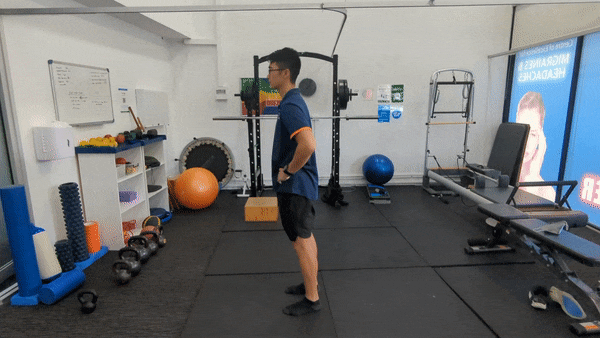
Hip Hinging
Keeping your knees perpendicular to the ground and your hips high, bend at the hips and lean forward to feel that hamstring stretch!
Try around 2-4 sets of 20 repetitions.
The Diver
Standing on one leg, lean forwards and stick your opposite leg out to get into the diving position as above.
Perform 2-3 sets of 6 repetitions each.
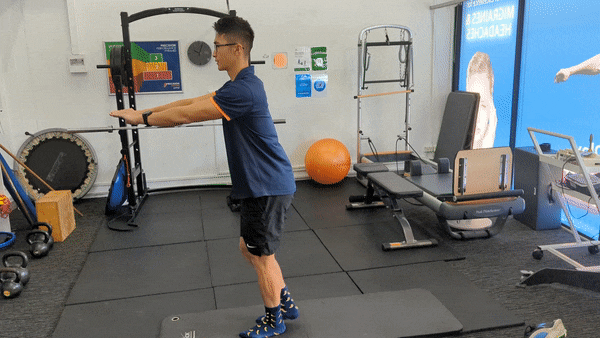
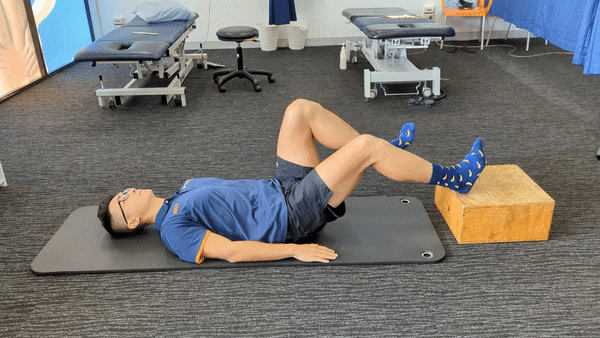
Single Leg Glute Bridge On a Block
Set up a 10-20cm block, place one of your heels onto the block and perform as above.
Try 3 sets of 6 at the end of your workout to feel that hamstring burn!
However, only performing hamstring exercises without addressing other muscles, joints, and movement pattern deficits is like performing at a concert without an instrument!
To best determine what you need to do for your hamstring injury, and to properly deal with and address all the contributing factors which led to the injury, book in to see one of our physiotherapists!
This article was written by Physiotherapist – Weir Kong, from our Precision Physio St Marys clinic. If you would like more information, or feel you might benefit from a session with one of the Precision Physio team, you can either come into our clinics, or work with us online.
How Do I Book An Appointment?
We’re taking the health of our clients, members and staff very seriously and our preference would be for you to call to book an appointment so that we can make sure to explain our approach to keeping you safe. You can call any of these numbers to schedule a session:
- Precision Physio Concord: 02 9736 3950
- Precision Physio St Marys: 02 9623 2220
- Precision Physio Mt Druitt: 02 9188 2552
Online Consultations
Evolving with the current environment, we are also now offering online appointments, meaning that we can support anyone who is unable to leave their home. Sessions are done via our state of the art Telehealth system and as long as you have a laptop or tablet with an inbuilt camera, or a phone with camera, we can help!
To learn more about online consultations, please call us on any of the numbers listed above.